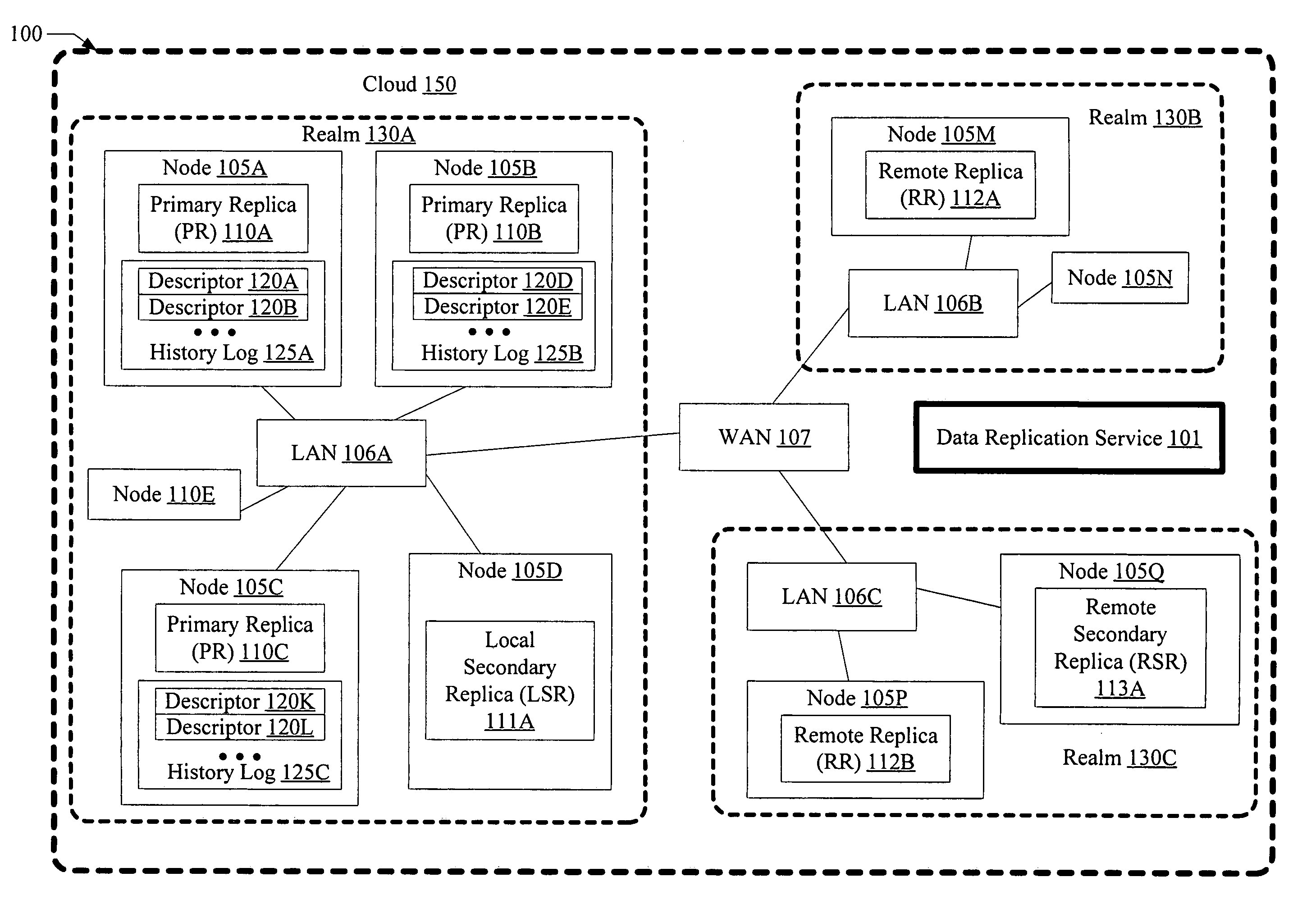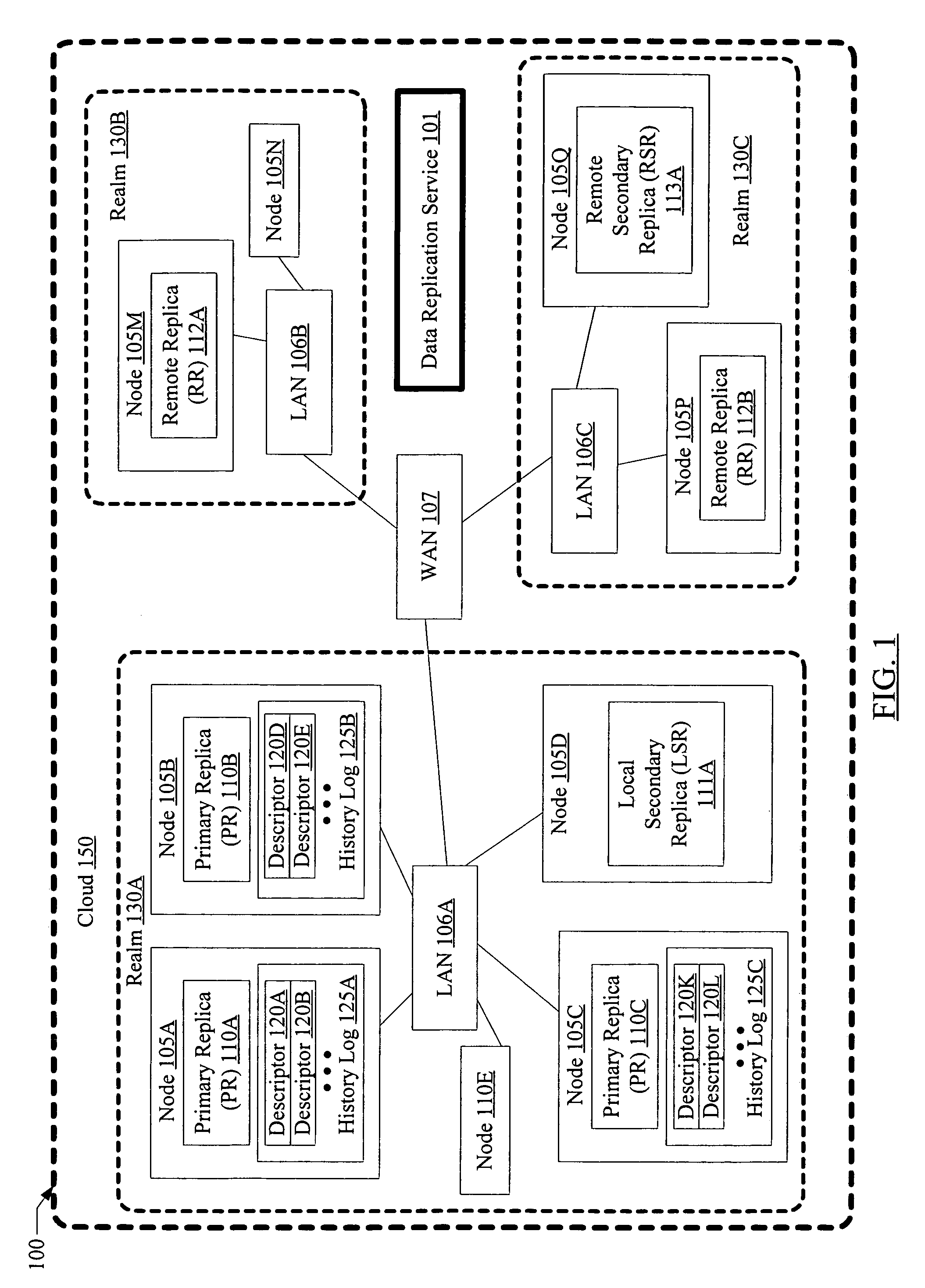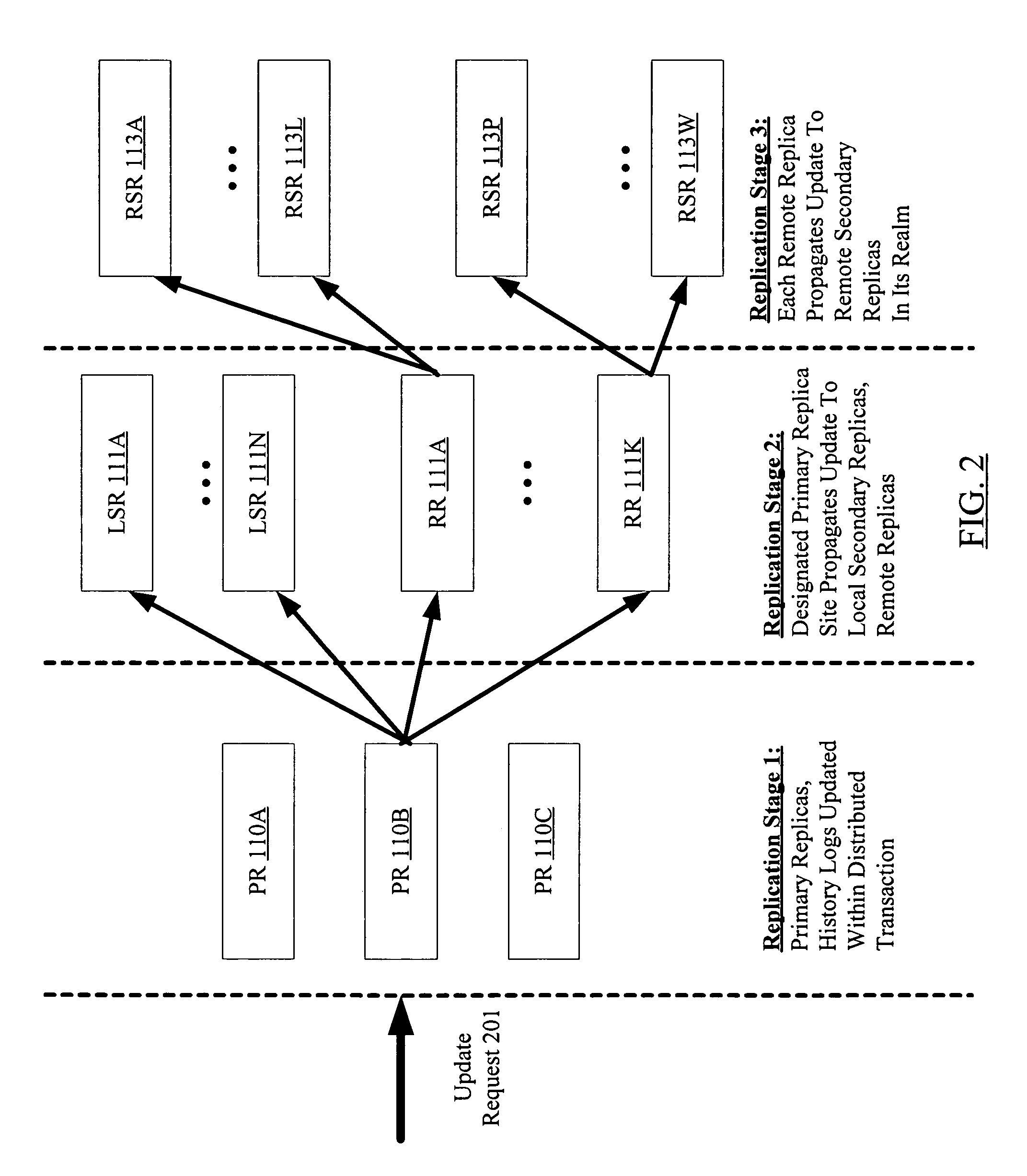Fault tolerant multi-stage data replication with relaxed coherency guarantees
a multi-stage, fault-tolerant technology, applied in the field of computer systems, can solve the problems of inability to replicate the needed data by brute force, the amount of traffic generated for coherency may be substantially reduced, and the design of large-scale distributed data management systems to support today's distributed enterprises is becoming even more complicated
- Summary
- Abstract
- Description
- Claims
- Application Information
AI Technical Summary
Benefits of technology
Problems solved by technology
Method used
Image
Examples
Embodiment Construction
[0020]FIG. 1 is a block diagram illustrating a system 100 according to one embodiment. As shown, system 100 includes a plurality of nodes 105 (such as nodes 105A-105E, 105M, 105N, 105P and 105Q) linked in a hierarchical configuration using local area networks (LANs) 106 (e.g., LANs 106A-106C) and wide area network (WAN) 107. Each node 105, may, for example, comprise a computer host or server with one or more processors, memory, storage devices such as disks or disk arrays, and a network interface card. At least a subset of the storage devices at each node may be accessible only from that node in some embodiments. A set of nodes that are linked to one another via a particular LAN 106 may be termed a “realm”130; e.g., realm 130A comprises nodes 105A-105E linked via LAN 106A, realm 130B comprises nodes 105M and 105N linked by LAN 106B, and realm 130C comprises nodes 105P and 105Q linked via LAN 106C. The set of realms 130 in a given instance of the system 100 may be termed a “cloud”150...
PUM
 Login to View More
Login to View More Abstract
Description
Claims
Application Information
 Login to View More
Login to View More - R&D
- Intellectual Property
- Life Sciences
- Materials
- Tech Scout
- Unparalleled Data Quality
- Higher Quality Content
- 60% Fewer Hallucinations
Browse by: Latest US Patents, China's latest patents, Technical Efficacy Thesaurus, Application Domain, Technology Topic, Popular Technical Reports.
© 2025 PatSnap. All rights reserved.Legal|Privacy policy|Modern Slavery Act Transparency Statement|Sitemap|About US| Contact US: help@patsnap.com



